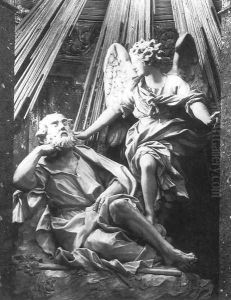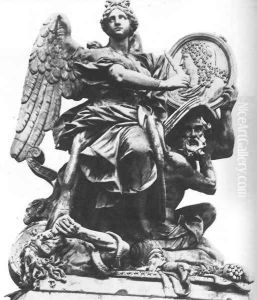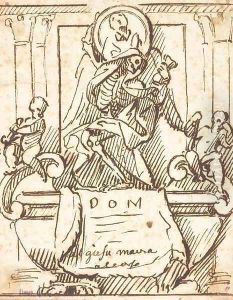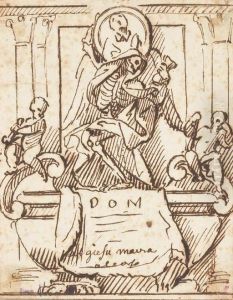Domenico Guidi Paintings
Domenico Guidi was a prominent Italian sculptor of the Baroque period, born in Carrara, Italy, in 1625. Coming from the region known for its superb marble, Guidi was destined to work within the realms of sculptural art. He moved to Rome at a young age, where he became an apprentice to the renowned sculptor Alessandro Algardi, one of the leading figures of the Baroque sculpture in Rome, whose influence was pivotal in shaping Guidi's early career and artistic development.
After Algardi's death in 1654, Guidi found himself in a competitive artistic environment, with Gian Lorenzo Bernini dominating the Roman art scene. Despite Bernini's overshadowing presence, Guidi managed to carve out a successful career for himself, receiving commissions from various patrons, including members of the papal family and the Roman aristocracy. His style is characterized by a dynamic expression of movement and an intricate attention to detail, which can be seen in works such as the relief 'The Rape of Proserpina' for the Chapel of the Palazzo Colonna and the 'Archangel Michael' in the church of Santa Maria della Concezione.
Guidi's contributions to Baroque sculpture are significant, with his works being celebrated for their emotional intensity and technical mastery. He was particularly adept at depicting complex narratives within his sculptures, bringing biblical and mythological scenes to life with a vivid sense of realism. Despite the competitive nature of the art world in Rome during his lifetime, Guidi's talents ensured that he remained in demand, and his sculptures can still be seen in churches, palaces, and museums throughout Italy.
Domenico Guidi passed away in Rome in 1701, leaving behind a legacy that continues to influence the world of art. His ability to convey deep emotions and his meticulous attention to detail have made his works enduring examples of Baroque sculpture. Guidi's sculptures are not only a testament to his personal skill and creativity but also to the vibrant artistic culture of 17th-century Rome.



